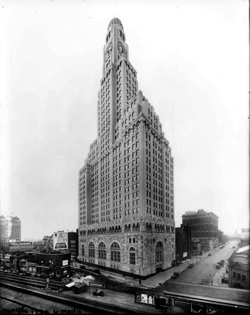
Early preservation efforts in the United States tended to revolve around a few similar themes. One, the places people rallied around usually related to a historical or famous figure or important event. Two, preservation organizations formed with private individuals and private money; government programs and entities did not develop until the late 19th-early 20th century.
While preservation efforts existed on the small scale before and directly after the Declaration of Independence and the American Revolution, the first major preservation act occurred in Philadelphia in 1816. By this time, the state of Pennsylvania had made plans to demolish the Old State House – now known as Independence Hall – and sell off the parcels of land. Knowing the historical significance of the building and the site, citizens of Philadelphia appealed to the city to preserve the site. The City of Philadelphia agreed to their appeals and purchased the building and the land for $70,000, thereby preserving it for future generations. Thanks to the foresight of Philadelphians, the site existed long enough to become Independence National Historical Park in 1951 and a United Nations Educational Scientific and Cultural Organizations (UNESCO) World Heritage Site in 1979.
The first preservation organization in the United States formed as a result of a letter between family members. As the famous story goes, Ann Pamela Cunningham’s mother stood aboard a steamship sailing down the Potomac River in 1853, aghast at the sight of George Washington’s deteriorating home. She wrote a letter to her daughter describing the building’s condition, and Ann Pamela Cunningham in turn began to form the Mount Vernon Ladies Association of the Union. When the U.S. Congress rejected their petition entitled “The Proposed Purchase of Mount Vernon by the Citizens of the United States, in Order that They May at All Times Have a Legal and Indisputable Right to Visit the Grounds, Mansion, and Tomb of Washington,” Ann Pamela Cunningham had the Ladies Association formally charted in 1856. She acquired funds from the Association’s members throughout the Union, which they used to purchase, restore, and curate Mount Vernon for visitors. The Mount Vernon Ladies Association still owns, maintains, and operates the historic site.
Exploration into western territories in the middle of the nineteenth century encouraged new thinking about the kinds of places in need of protection. The latter half of the nineteenth century also saw the beginning of government involvement in preservation efforts, efforts that increased rapidly in number and location during this time.
In 1872, the U.S. Federal Government designated Yellowstone National Park a federally protected area, the first such designation in the country. In 1889, the U.S. Congress appropriated $2000 for the preservation of Casa Grande in Arizona. In 1890, Congress passed legislation authorizing the preservation of American battlefields, Chickamauga Battlefield in Georgia and the Chattanooga Battlefield in Tennessee. In 1896, the U.S. Supreme Court upheld U.S. vs Gettysburg Railway Company, a landmark case that gave the creation of a national memorial precedence over the development of private property. In 1906, Mesa Verde National Park in Arizona was established.
That same year, Congress passed the Antiquities Act, the country’s first federal preservation legislation. The Act allowed the designation of monuments on federal land, protected federally owned sites from demolition, and laid down legislative basis for future preservation policy.
